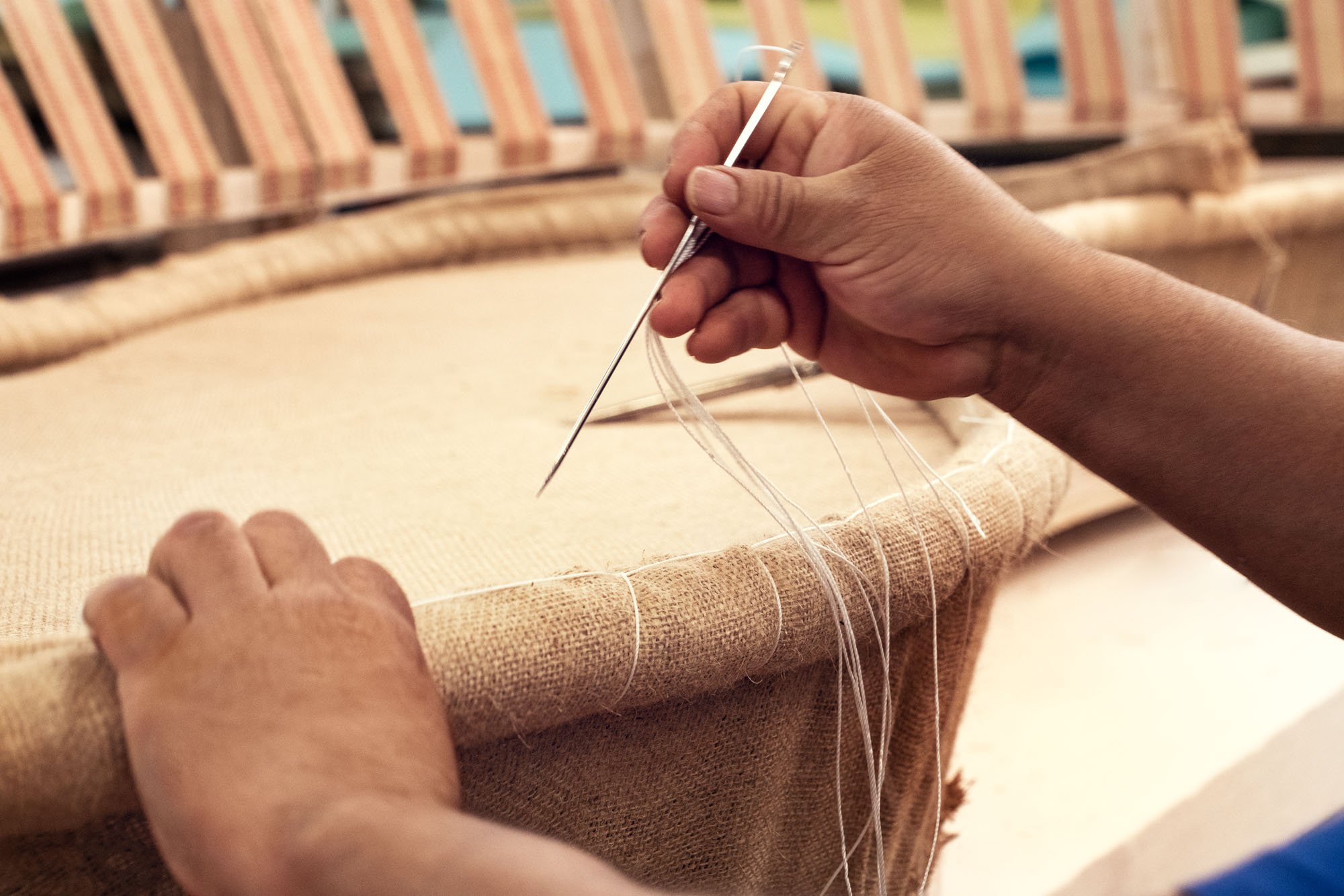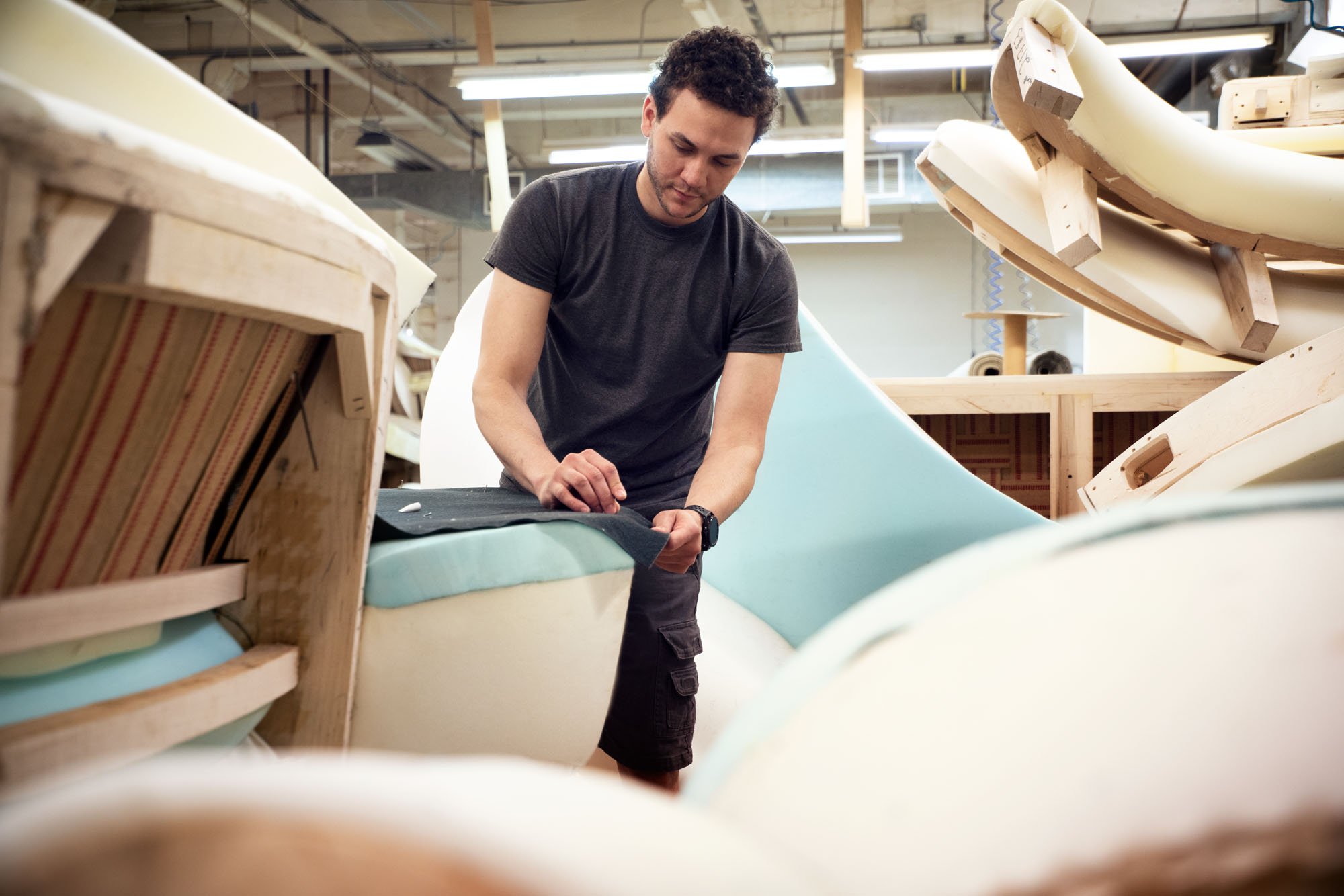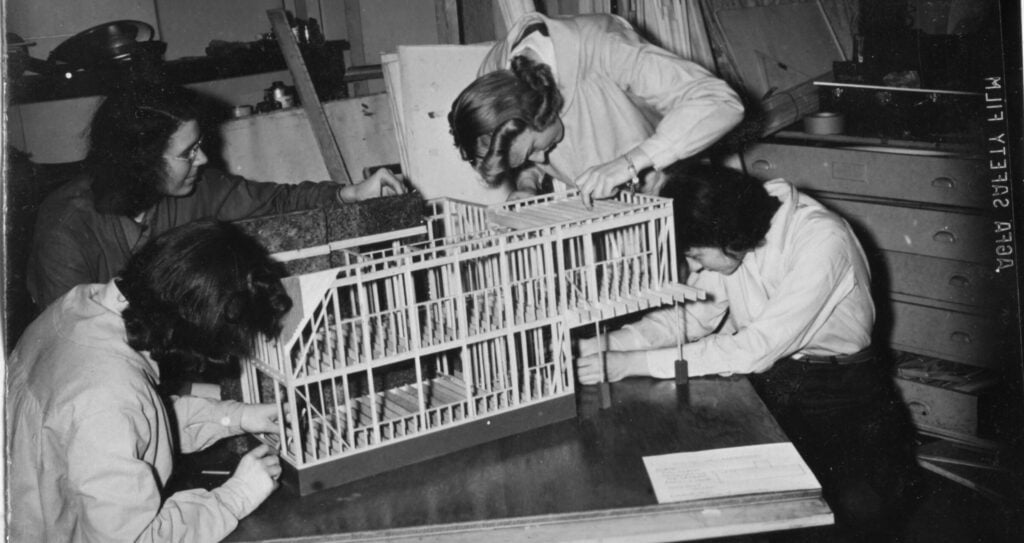
July 28, 2022
Crafting Vladimir Kagan’s Modernist Legacy
In a rambling brick factory building in Clifton, New Jersey, a team of carpenters are hard at work crafting a signature piece of mid-century modern furniture: Vladimir Kagan’s Serpentine Sofa. Kagan, who was known for his futuristic furniture and celebrity clientele died in 2016, but his legacy has been kept alive by a dedicated team of craftspeople led by design director Chris Eitel. Eitel, who apprenticed with Kagan from 2013 up until his passing, now leads the brand under the ownership of Holly Hunt.
When the German-American furniture designer introduced the Serpentine Sofa in 1950, it became an instant hit, appearing in fashionable living rooms around the world. But while the curvaceous form drips with space age sleekness, the sofa, like all of Kagan’s designs, is handmade by a group of skilled craftspeople, rather than machines.
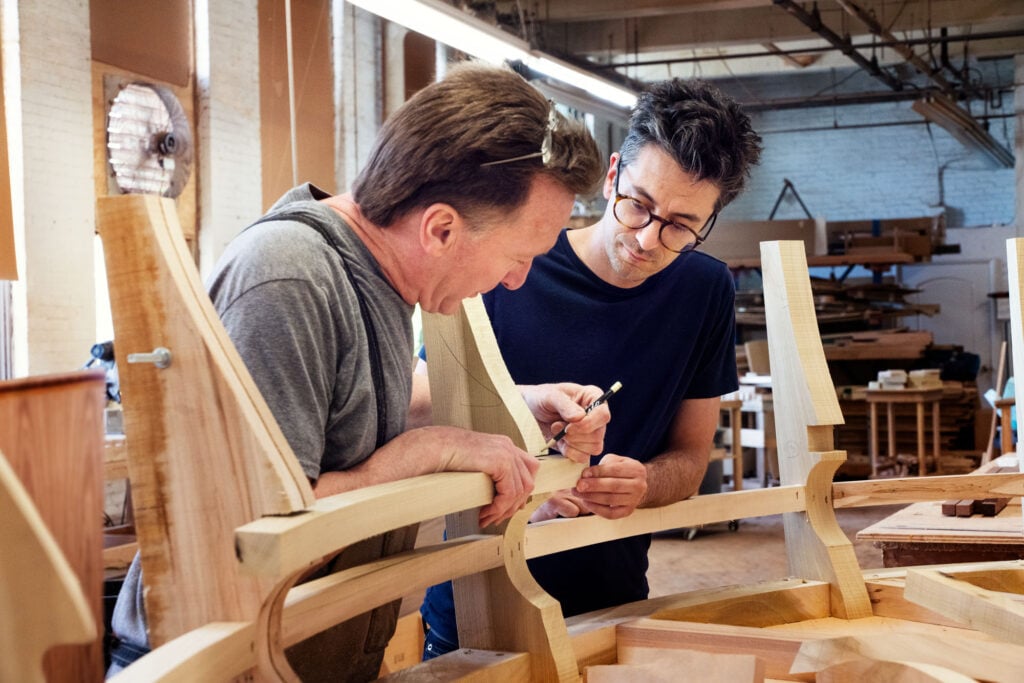
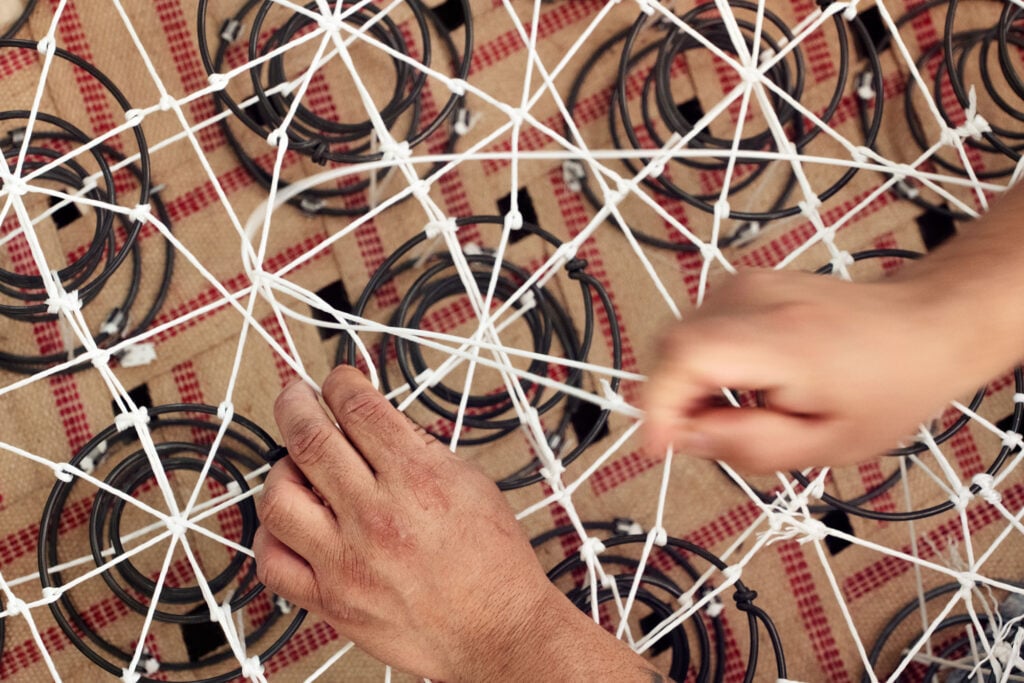
The process begins in the woodshop, where the Kagan team cuts two-inch-thick pieces of lumber into frames and assembles them to form the backbone of Kagan’s most iconic designs. The dozen or so carpenters who work in the factory will rough cut boards, line them up, cut notches to fit pieces together, cut again to ensure a perfect fit, and then fasten the pieces together. “It’s all done by hand,” says Eitel, “Kagans’ have been built this way for seven decades at this point. Even though you never really see the inside of it, we build a very durable structure. It’s something we refuse to change.”
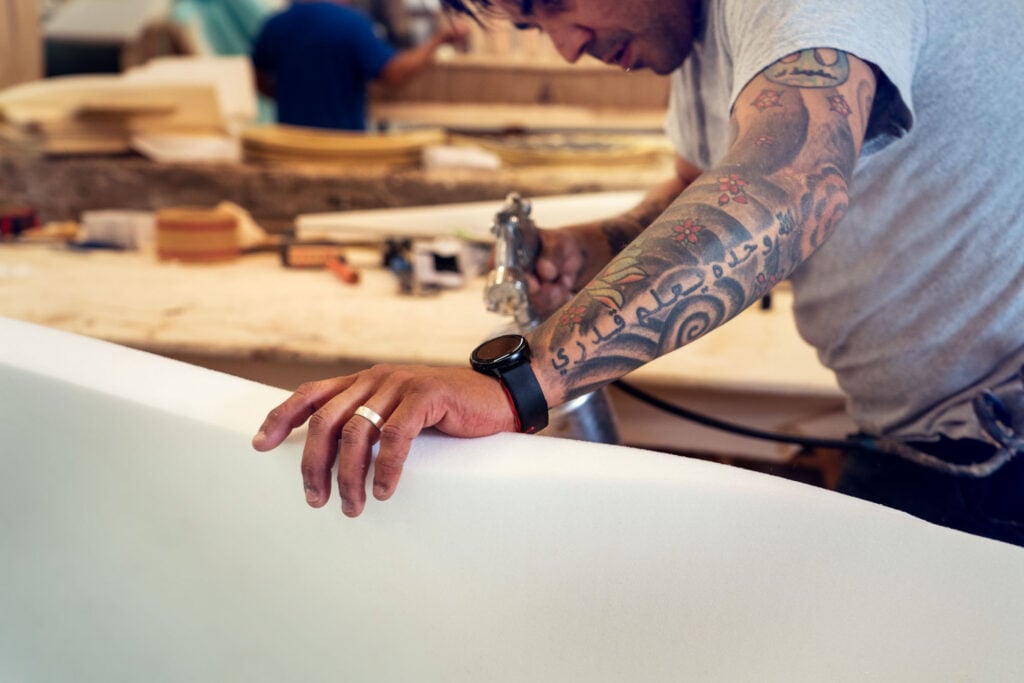
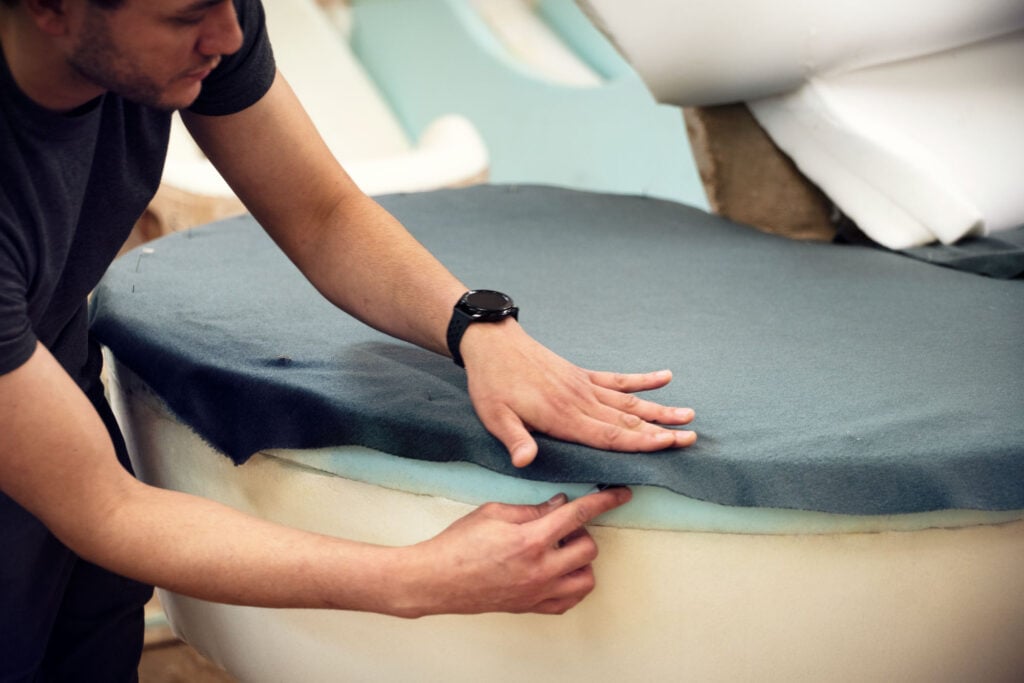
The finished frame is then taken for springing. This is the first layer of cushioning that begins to transform a solid wooden frame into a comfortable and durable piece of furniture. The Kagan shop uses a traditional eight-way hand-tied spring system which is a time consuming and laborious process, but one that Eitel says “is really top-of-the-line in terms of quality.” Each spring is fastened tightly to its neighbors so they work in unison to create a firm but forgiving base for the layers of foam that will cover them.
The springs are then sheathed in burlap, followed by layers of foam which are cut to the shape of the sofa before being fastened to its surface. Craftspeople will use multiple layers of foam for different products, working from a firmer to softer density material, which ultimately creates a soft and welcoming surface.
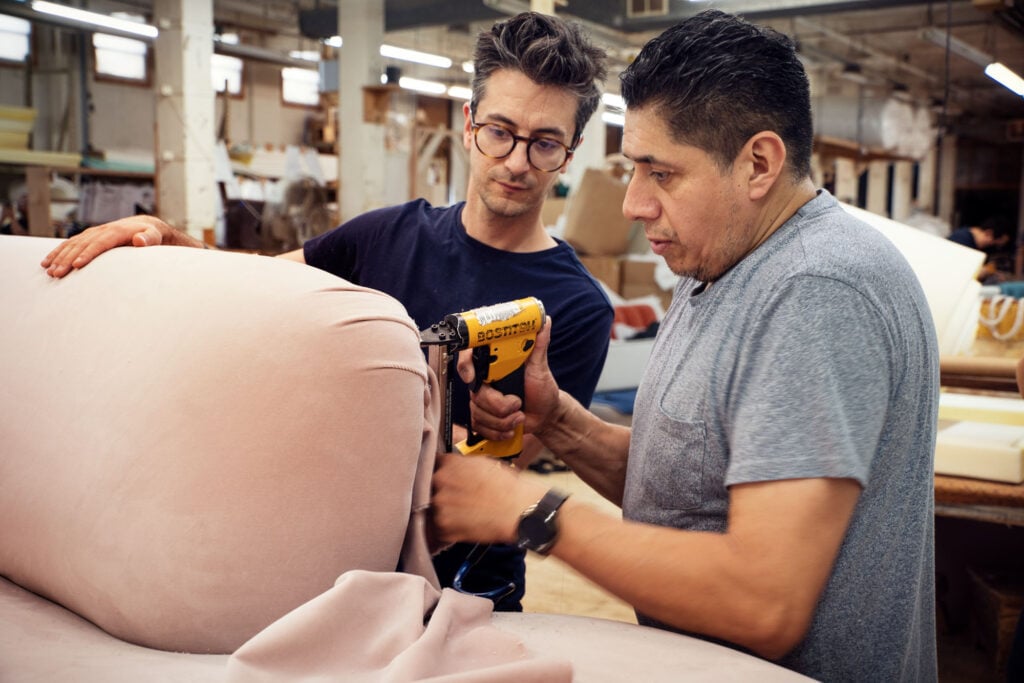
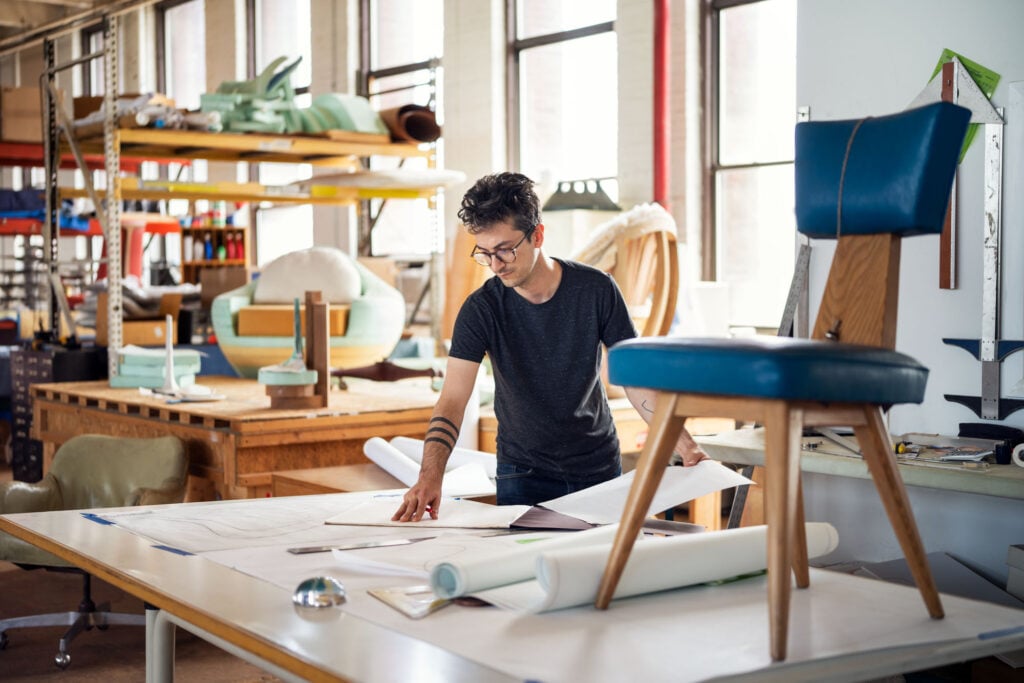
Framed, sprung, and clad in foam, the sofa is ready to be fitted for upholstery. Since each sofa is unique, the fabric must be custom-tailored. First, a pattern is taken on lightweight cambric fabric, which is then used to cut the fabric the customer has specified. To achieve the clean curves of Kagan’s designs, great care is required to stretch and pull the fabric into the right shape while working the foam to eliminate any bumps or creases. On the Serpentine Sofa, the tailor finishes the job by adding three pleats on each corner of the backrest, something of a Kagan trademark. Once upholstered, it’s inspected and shipped to the next person in a long line of design lovers.
Eitel is committed to keeping his mentor’s most famous designs in production: “That’s one way that we continue to honor the Kagan design legacy,” he says. But there are plans to expand the line with reintroductions and even new designs based on Kagan’s un-built plans and sketches. Having started his whole career with the designer, Eitel says that Kagan’s way of doing things has “kind of been drilled into me at this point.”
Would you like to comment on this article? Send your thoughts to: [email protected]
Latest
Projects
Taisugar Circular Village is a Model Case Study for Circular Economies
The Taiwanese project by Bio-architecture Formosana claims to be the first residential village in the country to be integrated within a circular economy.
Viewpoints
3 Sustainability News Updates for Q1 2025
Local laws, easy-to-access tools, and global initiatives keep the momentum on green building going.
Viewpoints
Women Architects Struggled to Find a Home Within Modernism
American women offered a counterpoint to the boys club of the International Style, a new book says.






